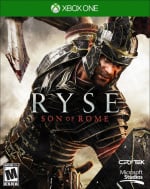If you remember the launch of the Xbox One, you probably recall the intense hype surrounding Ryse: Son of Rome. It was to be a console seller - a visually stunning action-adventure title from original Far Cry developer Crytek, boasting next-gen graphics on an unprecedented scale. Indeed, Ryse still holds up as one of the best-looking games of the entire Xbox One era. But it wasn’t all smooth sailing for the project, enduring a fairly lengthy and turbulent development period.
For the uninitiated, Ryse: Son of Rome is a third-person action-adventure game set in - surprise - Ancient Rome, and follows the life story of Roman centurion Marius Titus. The single-player campaign is around six hours in length, during which you engage in copious amounts of violent hack-and-slash combat, as well as take on archer roles and formation-based attacks. The game was a day one launch title and console exclusive for the Xbox One, releasing on November 22, 2013.
But before all that, Ryse had suffered from an unsettled development history, going all the way back to the mid-2000s. The game was originally revealed as a first-person action title called “Codename: Kingdoms” before it eventually evolved into Ryse - a Kinect-based title scheduled to launch on the Xbox 360. There were even fairly lengthy trailers released at both the 2010 and 2011 E3 expos in Los Angeles, with the latter showcasing Kinect controls being used to slaughter enemies with your sword.
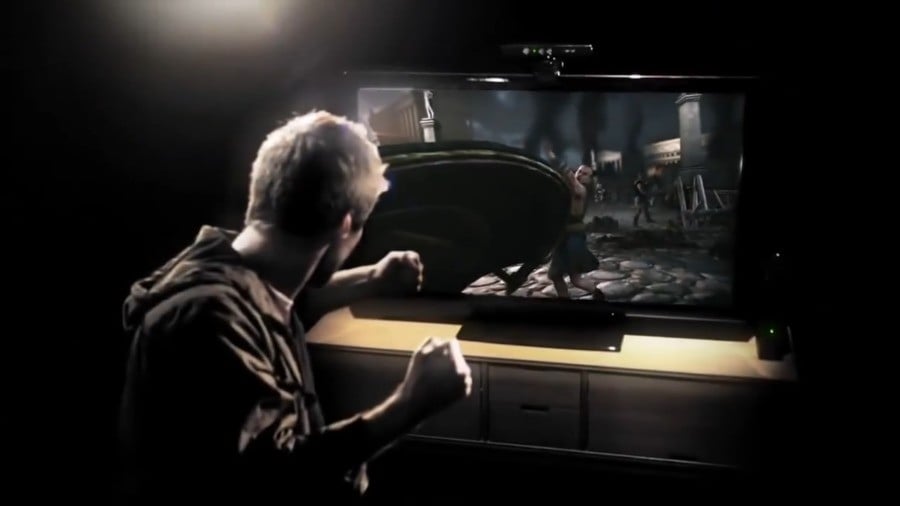
As progress on Ryse continued, the Kinect became less and less of a factor. Former Crytek CEO Cevat Yerli revealed to Polygon in 2013 that the company had developed internal prototypes for testing - each containing various levels of Kinect involvement - and eventually decided that the game would work better as a primarily controller-based title. The Kinect’s influence proved less integral as time wore on, and by launch, Ryse: Son of Rome was only utilising the Kinect for optional voice commands.
By now, there was also the matter of an upcoming console generation to contend with. The game was officially switched from an Xbox 360 project to an Xbox One launch title in May of 2013, and another trailer debuted a month later at E3 in Los Angeles, showcasing a couple of segments from the third level in the game. There were a few changes made afterward - coloured cues being used for executions instead of button prompts, for example - but the bulk of the game was finally in place.
A good deal of Ryse’s lasting legacy can be attributed to its outstanding visuals, which proved a massive step up from the Xbox 360’s capabilities back in November of 2013. The game boasts highly detailed and lifelike facial movements in particular, including near-perfect lip syncing, while giant set pieces and explosion-filled combat sequences are found in abundance.
Take the start of the game, for example. It begins with Marius navigating a burning city as he plows through enemies without mercy, and later transitions to a catapult-based segment in which you set off various explosions throughout the environment. It ascends into a spectacle of awe-inspiring demolitions and camera shakes, and yet despite the intense levels of action of screen, the game somehow manages to retain a buttery smooth frame rate throughout.
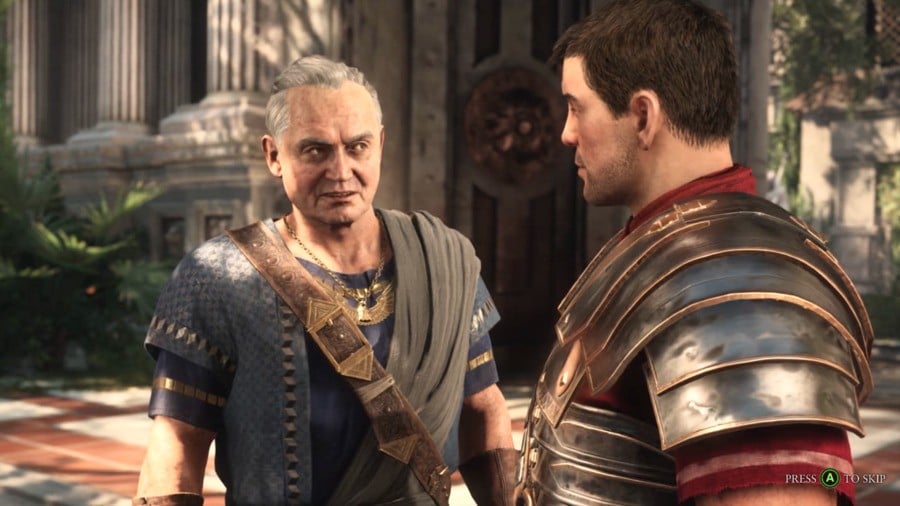
Ryse’s cutscenes are no less impressive. Crytek utilised Andy Serkis’ Imaginarium Productions to help develop the game’s motion-captured sequences, resulting in a highly realistic look. Up to twelve actors could be performance captured in any one scene, with the protagonist being played by John Hopkins of Midsomer Murders and Poldark fame. Additional actors on the project included Rachel McDowall (Mamma Mia! The Movie, Quantum of Solace) and Gerald Kyd (Casualty, Sherlock).
Their committed performances really add to the intrigue of the story, which starts off slowly but quickly develops. There are plenty of twists and turns as more characters are added into the mix, and the final few hours are highlighted by some particularly dramatic storytelling, complete with engaging combat segments and a satisfying finale. For a game this short, Ryse: Son of Rome never feels overly rushed, pacing its narrative surprisingly well.
Tying this all together is the gameplay, which admittedly is rather simple, requiring a combination of striking and blocking to defeat enemies. The depth comes from the combo system, which allows you to chain kills together to earn specific boosts and perks. You select these via the d-pad - health boosts, for example, or damage improvements - and there’s also a focus gain meter, which allows you to deliver Superman levels of damage for a short period of time.
Ryse’s combat has come under fire on occasion for its repetitive nature, and outside of a few archer, catapult and formation-based segments, it’s admittedly a bit samey. But there’s an elegance to the flow of Ryse’s combat which keeps things engaging throughout its six-hour run. You can seamlessly transition from one enemy to another without ever breaking your momentum, and this opens up the potential to really master your swordplay as time wears on.
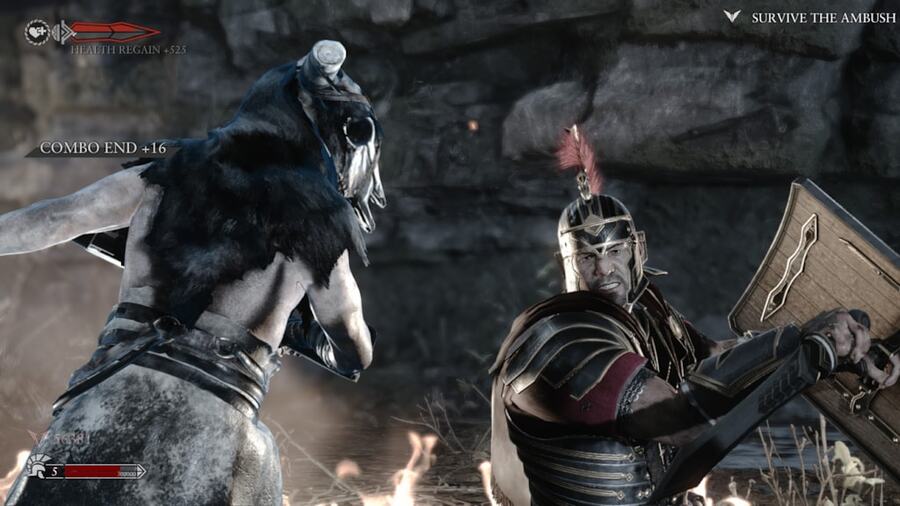
In one section, for example, you’re tasked with rescuing prisoners from being burned alive, as well as combating various waves of enemies. It’s a lose-lose situation on paper, but by navigating the situation intelligently, as well as using all the tools at your disposal, you can practically moonwalk your way from enemy-to-enemy without ever taking damage, dealing out unprecedented levels of brutality to dangerous adversaries.
The reward for success in combat is the ability to pull off gory execution sequences. Again, these provide various perks upon completion, including health regeneration, and simply require you to press one of two buttons depending on the flashing colour of the enemy. There are plenty of ways to do away with your opponent - the majority proving highly gruesome and blood-splattering - and the slo-mo effect contrasts well with the faster pace of standard combat.
Again, these sequences place a key focus on retaining momentum in battle. Enemies never interrupt your executions, which may seem unrealistic, but ensures you can continue building combos and switching between enemies with ease. Executions are typically context based, allowing you to intelligently tip people over ledges and shove them against walls, as well as maneuver back and forth to perform double executions when the situation allows.
You can purchase more elaborate executions with in-game currency as you go, too. Additional upgrades include boosted health meters and greater arrow capacity, and while they’re certainly a help during your initial playthrough, they’re also a major boost when replaying for a second or third time on a higher difficulty. Fortunately, it doesn’t take long to get your hands on them - I’ve only completed the single-player campaign twice, and I’ve long since unlocked them all.
Another area of the game that benefits from upgrades is the co-op multiplayer portion. It’s called Gladiator, and sees you and another player enter the Colosseum to face waves of enemies across a small selection of game modes. It’s a surprisingly detailed mode, packed with replayability, and allows you to earn improved armour, weapons and special potions along the way.
The main downside to Gladiator mode is the obvious one - barely anyone plays it anymore. Over a decade since the game’s release, the multiplayer lobby is unsurprisingly quiet. That said, you can always encourage your friends to download it via Xbox Game Pass, and as a last resort, there’s a wholly functional solo mode that remains engaging for at least a few playthroughs at a time.
Ryse’s plethora of post-launch DLC is also centred around Gladiator mode. Various content packs, such as the Duel of Fates and Morituri packs were released in late 2013 and throughout 2014 as part of the Season Pass (and eventually the Legendary Edition), incorporating special skins as well as brand-new multiplayer maps. The Mars’ Chosen Pack also introduced a new mode called Survival, challenging players to survive for as long as possible whilst constantly bleeding out, proving a welcome addition.
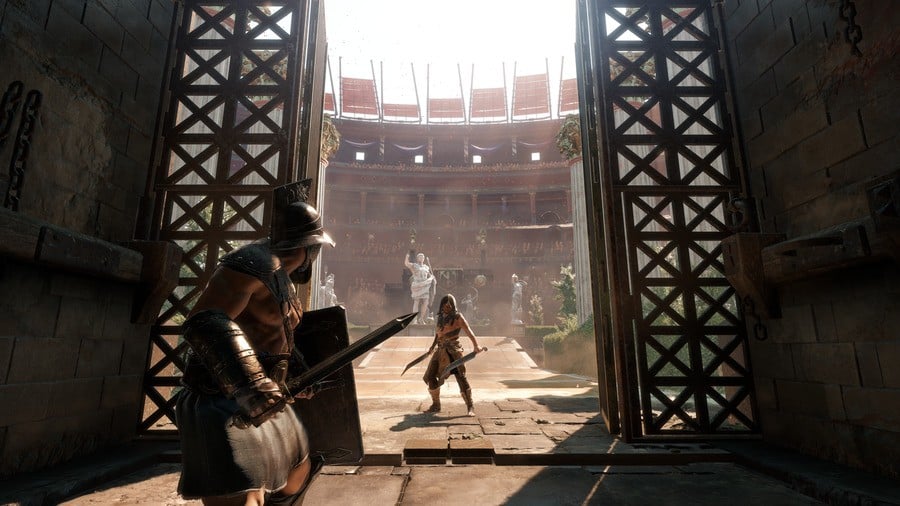
Ryse: Son of Rome launched alongside the Xbox One in November of 2013 to a lukewarm, but generally positive reception. Pure Xbox gave it a 7/10 back then, commenting that its “bloodthirsty combat and fast pace gets the adrenaline pumping”. The review also praised the game’s “bombastic and spectacular" set pieces” along with its “well put together and expertly delivered” narrative.
Unfortunately, there was never a sequel. Former Crytek CEO Cevat Yerli noted in an August 2014 interview with Eurogamer that despite maintaining a “good relationship with Microsoft,” the timing wasn’t currently right. Xbox head Phil Spencer later revealed the situation was complicated. “There is never an easy answer to why something didn't happen,” he commented in a response on Twitter in April 2018. “It's a combination of a lot of things, some right and some wrong. I really liked the game, I'm glad you did as well. It's a genre we should be doing more in, I agree on that.”
Crytek also went through various transitions in the years following Ryse: Son of Rome’s release. This included the closure of four studios back in December 2016, as well as a change of CEO in 2018, with Cevat Yerli stepping down from the role and his two brothers (Avni and Faruk) taking over. Crytek developed their first game for the Xbox One since Ryse: Son of Rome in 2019 - the well-received first-person shooter survival game, Hunt: Showdown. And more recently, the company confirmed that Crysis 4 is officially in the works.
Perhaps Ryse 2 isn’t to be, then, which seems a shame. Despite its shortcomings, the original game remains a cult favourite, and looked to have built a solid platform for a more involved and lengthy sequel. It remains a key part of Xbox history regardless, proving one of the more memorable launch titles and Xbox exclusives of the past decade-plus, entertaining Xbox One adopters from day one with its mesmerising visuals, engaging story and brutal combat.
It’s currently available on Xbox Game Pass too, of course, and perhaps that’s where its legacy lies as we continue through this Series X|S generation. It remains to be seen whether it'll get a much-desired upgrade to 4K resolution and 60FPS in the future, but regardless, there’s still every reason to strap on the armour - chinks and all - and relive Marius Titus’s compelling story one more time in the interim.
